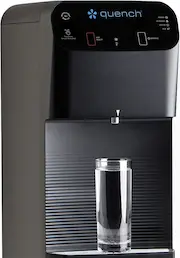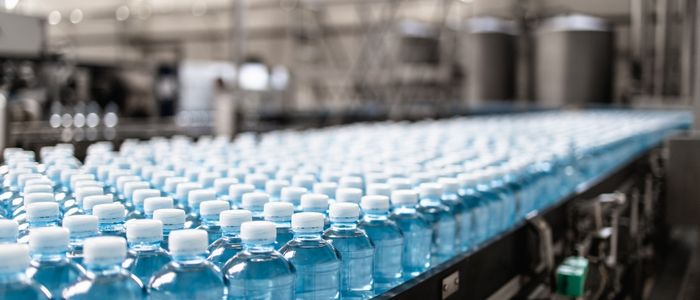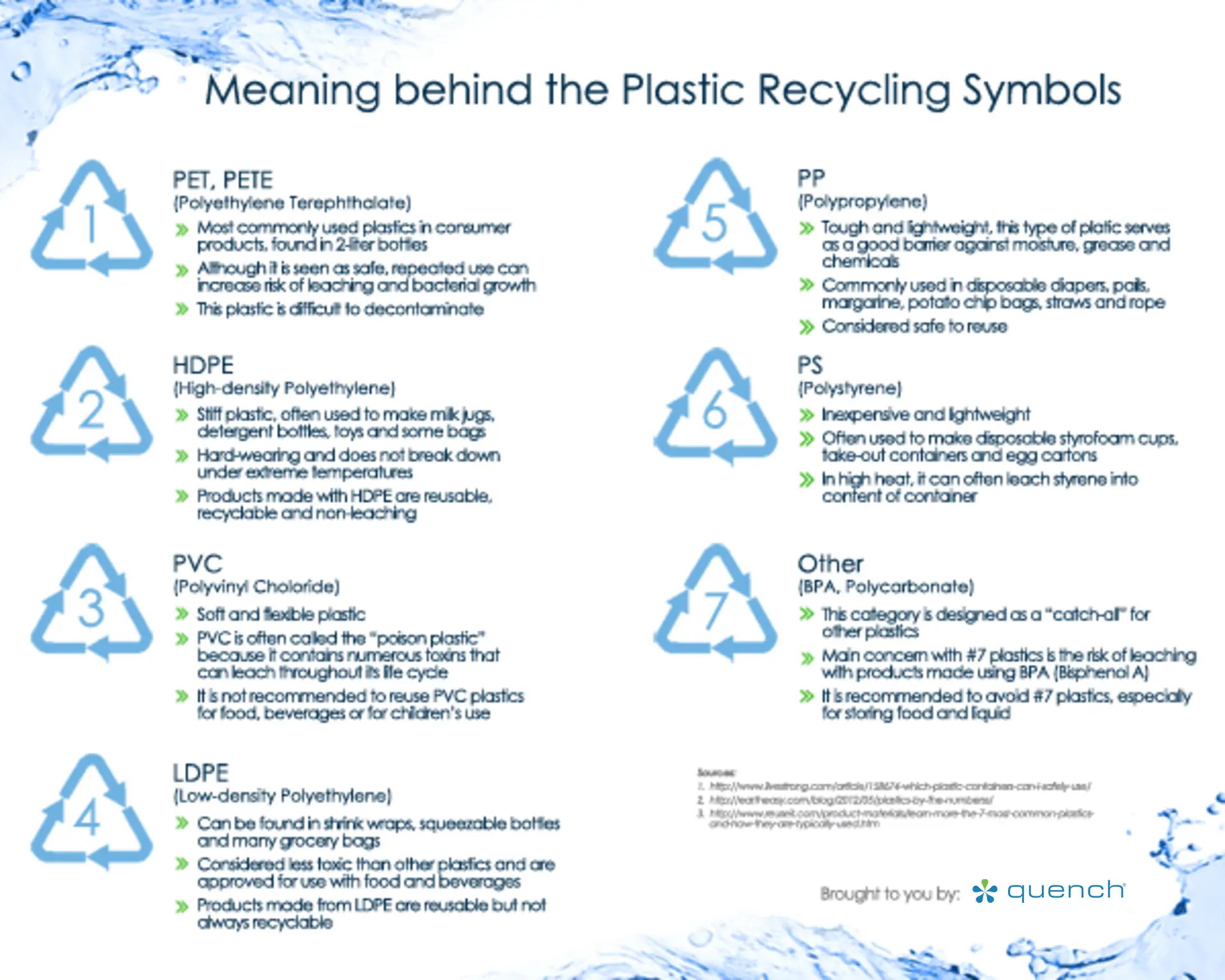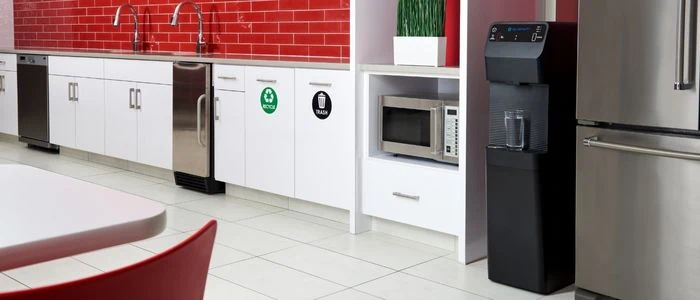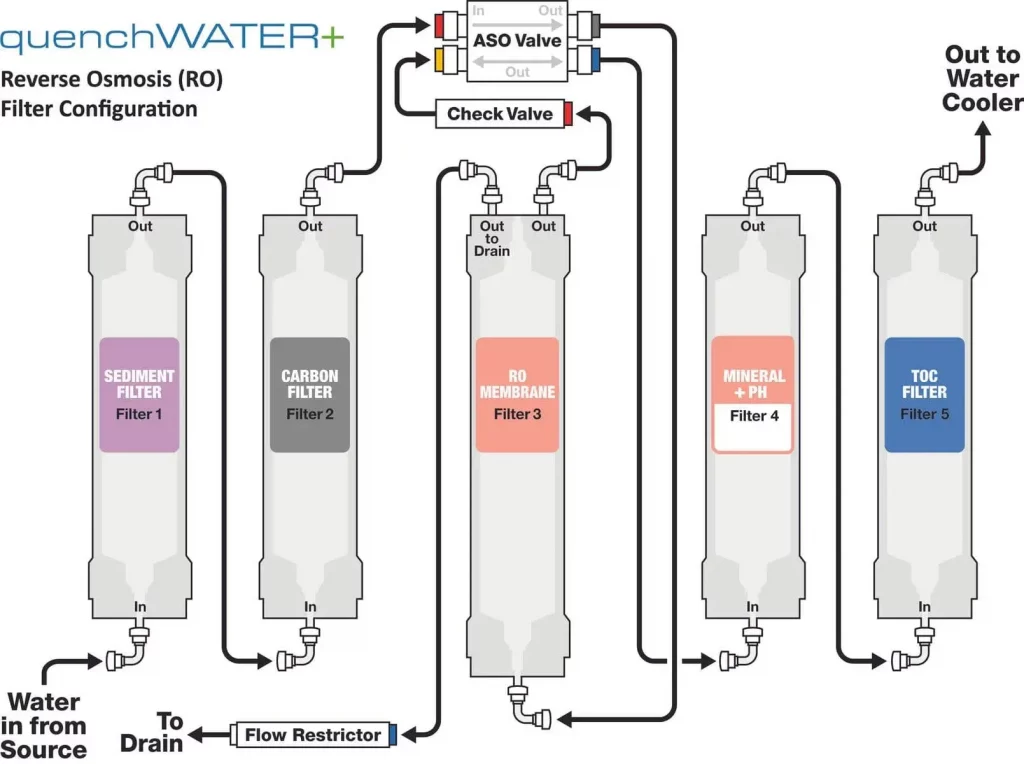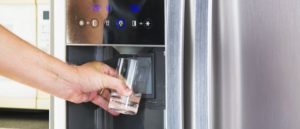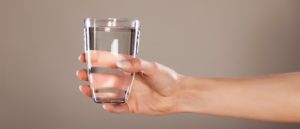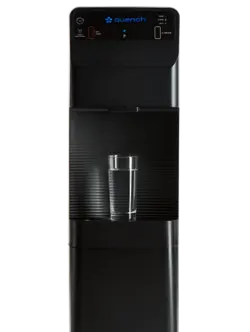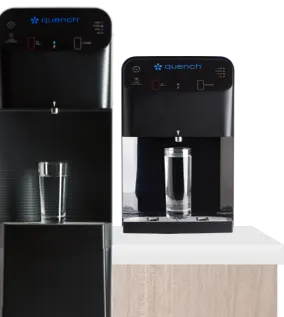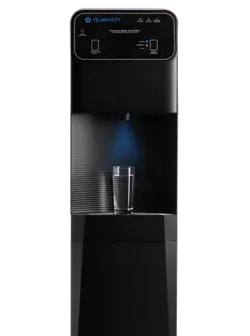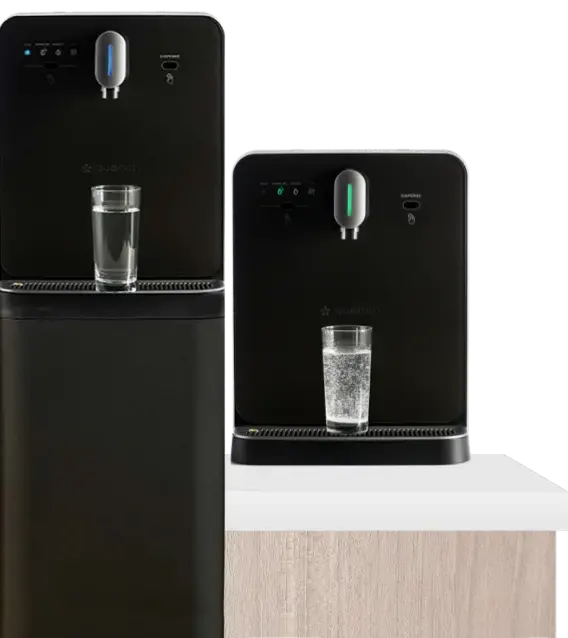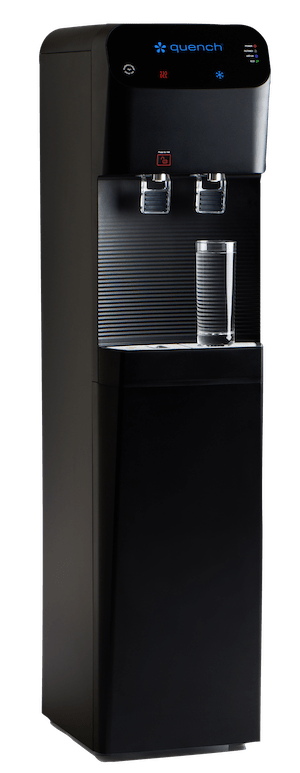Providing clean water at work is always an essential goal for organizations. However, workplaces that rely on plastic bottles for their drinking water supply — whether that be a single-use bottled water product or a 5-gallon jug — are increasingly recognizing the adverse effects these solutions can have.
Despite growing concerns over plastic bottle usage, a survey from the International Bottled Water Association (IBWA) found that 83% of employed Americans drink from bottled water sources at work. Moreover, Statista reports that the U.S. bottled water sales volume amounted to approximately 15 billion gallons in 2020, which is the highest volume ever sold in the United States. As a result, it’s more important than ever for workplaces to understand the true impact of bottled water resources on their workforce.
Read on to learn everything you need to know about bottled water and why organizations are making the switch to bottleless alternatives with advanced filtration technology.
Understanding Where Bottled Water Comes From
Before recognizing where bottled water comes from, workplaces need to understand what constitutes bottled water in the first place. Under the Food and Drug Administration (FDA) labeling rules, bottled water includes products labeled:
- Bottled water
- Drinking water
- Artesian water
- Mineral water
- Spring water
- Purified water
A majority of organizations and workers in North America assume that bottled products always offer clean water. However, Food & Water Watch explains that 64% of bottled water is plain tap water, often sold without being treated or filtered. The FDA notes that other, less prevalent bottled water resources include natural springs, water drawn from man-made wells, or taken via a process of distillation.
This is cause for concern because the U.S. Environmental Protection Agency (EPA) has no regulatory power over bottled water. Instead, the responsibility lies with the FDA, which has no obligation to ensure bottled water is safer than tap. They’re solely responsible for ensuring the safety and truthful labeling of bottled water sold nationally. That means there are no regulations to say that bottled water must be disinfected or tested for pathogens like cryptosporidium or giardia. Therefore, even a well-known bottled water brand can contain water-borne contaminants, fertilizer residue, and toxic byproducts of chlorination.
The Problem With Bottled Water Sources
With the IBWA reporting that annual sales exceeded $40 billion in 2021 — which represents an 11.2% increase from the previous year — bottled water companies continue to persuade the public that bottled water is not only cleaner than tap water but a healthier option, too. This research also highlights that workers in North America consumed 15.7 billion gallons of bottled water in 2021, meaning, on average, each American drank 47 gallons — a 3.9% increase from 2020.
Amid continuous growth in the bottled water industry, it’s essential for workplaces to recognize that a plastic bottle is ultimately a serious potential health hazard. Let’s take a closer look at research from the experts:
- Scientists at the State University of New York found that 93% of the world’s bottled water contains microplastics — fragments of any type of plastic less than 5 mm (0.20 in) in length — that you ingest when you drink it.
- Tests by the Department of Environmental Services discovered dangerous levels of man-made chemicals in bottled water, resulting in advice that pregnant, elderly, or young consumers avoid it.
- A study in Germany identified upwards of 25,000 separate chemicals in tested bottled water samples — many of which were at sufficient levels to cause a concerning level of hormone interference.
The EPA regulates municipal water supplies under the Safe Drinking Water Act (SDWA) to ensure safe levels of contaminants. Over the years, utility companies have achieved this by adding chemicals like chlorine and disinfection byproducts (DBPs) to reduce contaminants and kill off any illness-causing bacteria. However, the Minnesota Department of Health suggests chlorine and DBPs could be too toxic for human consumption. As a result, the EPA has set limits on several types of DBPs by balancing the health benefits of water disinfection with the risk of exposure to disinfection byproducts. Some of these DBPs include:
- Trihalomethanes (THMs)
- Haloacetic acids (HAAs)
- Chlorite
- Bromate
Moreover, municipal water is at risk of other sources of contamination including industrial waste, pesticide run-off from farms, and heavy metals like lead and arsenic. This underscores that standard water filtration in the bottled water industry is simply insufficient to remove all contaminants and sediment particles from water. This is more than a detriment to your workplace water quality but also the health of your employees and your organization’s environmental footprint.
Bottled Water Sources Can Be Hazardous to Your Health and the Environment
Bottled Water and BPA
BPA stands for Bisphenol-A. It’s an industrial chemical used in plastic production and commonly found in plastic water bottles. Research from the National Institute of Environmental Health Sciences suggests that BPA can leach from containers into liquids. If it does, Medical News Today reports that it can:
- Disrupt hormonal function in humans
- Impact brain development in fetuses and young children
- Cause behavioral changes
- Result in reproductive issues
- Increase blood pressure
- Lead to heart disease
Chemicals in Your Plastic Water Bottle
The chemicals present in your water bottle will depend on which type of plastic it’s made from. For a better insight into what chemicals might be present, check the number in the recycling symbol on your bottle to see if you’re at a higher or lower risk. According to this Smart Plastics Guide, here are a few plastic types and potential health risks to keep in mind:
- Plastic #1 (PET – Polyethylene terephthalate) is the most common type of plastic used in water bottles and poses no known risk to human health.
- Plastics #2 (HDPE – high-density polyethylene), #4 (LDPE – low-density polyethylene), and #5 (PP – polypropylene) are also low-risk.
- Plastic #7 likely contains BPA and so is best avoided. This plastic is commonly used in 5-gallon water bottles. Even if a plastic container doesn’t contain BPA, it likely includes phthalates.
Plastic Water Bottles and the Environment
Plastic pollution has become the #1 environmental battle of our generation. Around the world, one million plastic bottles are purchased every minute, and, despite current sustainability initiatives, there are an estimated 75 to 199 million tonnes of plastic in our oceans today, per a report from the United Nations Environment Programme. As if the visible pollution isn’t enough, the carbon footprint of producing bottled water is unfathomable. The Water Project found that it takes an estimated 54 million barrels of oil to generate enough energy to produce bottled water for just the United States: that includes the process used to make the bottles, store and transport the water, and then recycle the empty containers.
6 Reasons to Switch to a Bottleless Water Dispenser and Filtered Water
With all of the challenges and risks related to bottled solutions, it’s a great time to make the switch to a bottleless drinking water alternative that takes advantage of state-of-the-art filtration — giving your team members access to a much tastier and cleaner end-product. Here are the top reasons to upgrade your workplace drinking water systems:
- Improve filtration results: The findings are clear — bottled water filtration is likely insufficient to support the health and well-being of your teams in the long run. Comprehensive filtration technology can provide a much higher quality result.
- Support your workforce: Proper hydration is a linchpin in making sure your employees feel great and can reach their full potential — which ultimately improves your organization’s operational efficiency and productivity. A clean water supply is considerably more supportive of a healthy and productive workforce long-term.
- Minimize carbon emissions: Companies that replace single-use plastic bottles with bottleless water coolers emit 95% fewer tons of CO2 every year (for an office of 50 daily users).
- Enjoy a limitless supply of water: Not only does a bottleless dispenser offer filtered water, it’s also connected directly to your building’s existing water line, which ensures your employees and customers have access to an endless supply of clean water.
- Reduce plastic waste: Just one bottleless water cooler can keep 7,000 plastic bottles or at least 150 5-gallon water jugs out of the environment every year.
- Customize solutions: With a reliable water service provider like Quench, your business can leverage valuable resources, including our Quench Water Experts. Because water quality can vary from zip code to zip code, these local professionals will work with you to help you find the water system that meets your unique organizational needs.
How a High-Quality Bottleless Solution From Quench Resolves Concerns
If your workplace has been in search of a drinking water solution that can keep your employees, guests, and customers hydrated without the health or environmental risks associated with plastic water bottles — Quench can help. With a bottleless water cooler, you can help your employees avoid BPAs, chemicals, and microplastic contamination — all while taking your workplace water quality to the next level and supporting health with cutting-edge filtration technology.
Quench’s proprietary quenchWATER+ technology leverages a 5-filter setup (including carbon and reverse osmosis filtration) to remove unwanted pollutants like chlorine, lead, pesticides, and other suspended particles from water — leaving you with fresh, great-tasting alkaline water your workforce will love.
Not sure what you need? Try our product finder to get matched with the cooler that meets your unique water filtration needs. Or, if you’re ready to offer your workplace a limitless supply of safe drinking water, get a free quote to get started.
